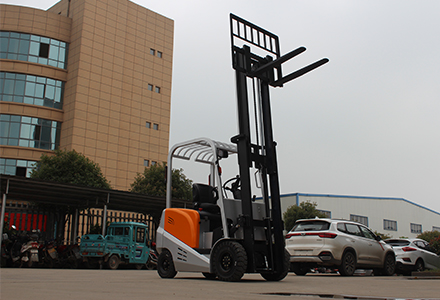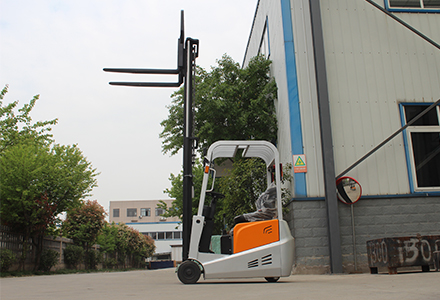Different warehousing modes need to be configured with different electric forklifts, and the matching mode will be very different in FIFO or FILO, space utilization, operation efficiency, and investment cost. As a large-scale distribution center, the positioning is mainly for goods in and out. How to configure the forklift to achieve its purpose and function is very critical.

1. Forklift tonnage configuration
Mainly 1.5T, 1.8T, 2T, 2.5t, and 3T; the choice of purchase configuration depends on the weight of the goods and the maximum fork height. As the height increases, the maximum safe weight of the forklift gradually decreases. For example, a 2T battery forklift with a height of 5 meters can fork to 2T when working at a low position, but when the fork is close to a height of 5 meters, its safe weight may only be 800KG, or at most 1000KG. Exceeding this weight may be dangerous due to overloading, which is particularly important to know and understand.
2. Forklift drive
Since the battery forklift involves indoor and outdoor operations, considering the two configuration ratios, the battery forklift is much less powerful than the diesel forklift, but the battery forklift has the advantages of environmental protection, and low noise, small operation turning radius, and low operating cost.
3. Lifting height of the forklift
Taking into account the need for elevated warehouse operations and the height of the comprehensive warehouse, the lifting height of the forklift should be properly considered from the standard configuration of 2.5m, 3.0m, 3.5m, 4.0m, 4.5m, 5.0m, 5.5m, and 6.0m; generally, several combinations will be considered separately according to low-level operation and high-level operation to reduce the total purchase cost.
4. The height of the forklift
Considering that the electric forklift will enter the container for operation or elevator turnover operation, the height of the forklift gantry also needs to be considered. It is required that the net height in the container is less than 2.3m, and at least two gantries are required; however, the lifting height of the forklift truck will conflict with the height of the gantry, and the lifting height is too high. Whether it is a three-section gantry or a two-section gantry, the height of the gantry is 2.4 meters, so you can't have both.
5. The number of tires of the forklift
Considering the width of the forklift operating channel, in the case where a high-cost reach forklift cannot be purchased, it is also necessary to consider whether to choose a three-wheel electric forklift or four-wheel. The turning radius is much smaller than that of a four-wheel counterbalanced forklift.

6. Forklift tires
Consider the pneumatic tires or solid tires. The standard configuration of forklifts is generally pneumatic tires or polyurethane tires, which are not resistant to wear and increase maintenance costs. Therefore, if the budget permits, forklifts with solid tires can be considered.
7. Follow-up maintenance costs
Electric forklifts also need to consider whether to choose a direct motor or an AC motor. In the AC, it is necessary to distinguish whether it is full AC or half AC because this involves a follow-up maintenance cost.
Of course, the brand, after-sales service and cost performance of electric forklifts should also be considered. It is very important to select a suitable manufacturer of electric forklifts.EFORK, a manufacturer focusing on the R & D, production, and sales of electric forklifts, supports the demand for more industry-specific non-standard customization.